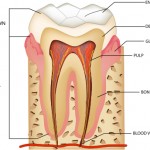
This review compared direct pulp capping in permanent teeth with MTA and calcium hydroxide including 13 studies, 10 of which were RCTs. The odds of success were higher with MTA, OR = 2.26; (95% CI, 1.33–3.85).
[read the full story...]
This review compared direct pulp capping in permanent teeth with MTA and calcium hydroxide including 13 studies, 10 of which were RCTs. The odds of success were higher with MTA, OR = 2.26; (95% CI, 1.33–3.85).
[read the full story...]
This new Cochrane review update finds no evidence to clearly identify one superior pulpotomy medicament and technique for primary molars.
[read the full story...]
The aim of this study was to evaluate and compare two different white MTA cements as pulpotomy medicaments in human primary teeth, Pro-Root MTA and MTA Angelus. Child patients with deep occlusal carious lesion, which presented potential risk of pulp exposure during complete removal of carious dentin, as determined by clinical and radiographic assessment were [read the full story…]

When I was training formocresol was the standard dressing for primary teeth following pulpotomy . However, it use is now questionable because of potential adverse effects such as potential carcinogenicity, mutagenicity, and cytotoxicity. Consequently a range of other materials have been investigated, ferric sulphate, gluatraldehyde preparations , mineral trioxide aggregate (MTA), electrosurgery, calcium hydroxide, and laser [read the full story…]

Exposure of the dental pulp is an occasional hazard associated with dental treatment. Direct pulp capping is a procedure in which a medicament is placed directly over the exposed dental pulp, with the specific aim of maintaining pulp vitality and health. Calcium hydroxide (CaOH) has for many years been considered the material of choice for [read the full story…]

This new critical summary from the ADA-Center for Evidence Based Dentistry looks at a 2010 review from Mickenautsch et al. The aim of that review was to compare the pulpal responses to resin-modified glass ionomer cement (RM-GIC) and calcium hydroxide when placed in deep cavities. The review only included six trials (one randomized and five [read the full story…]

Pulp necrosis in immature teeth arrests root development so apical closure cannot be achieved. Root canal treatment of these teeth is a challenge. Procedures to encourage apexification have long been the treatment of choice success in preserving damaged immature teeth. A range of materials have been recommended to induce apexification in teeth with immature apices. [read the full story…]